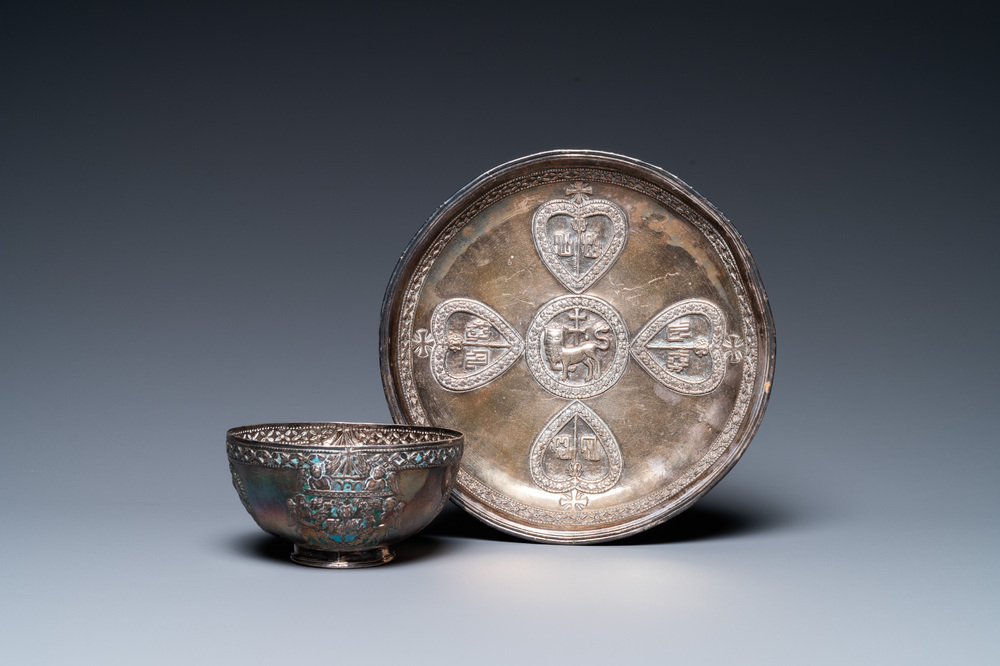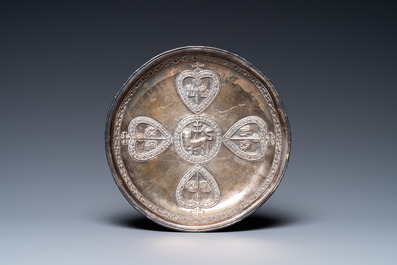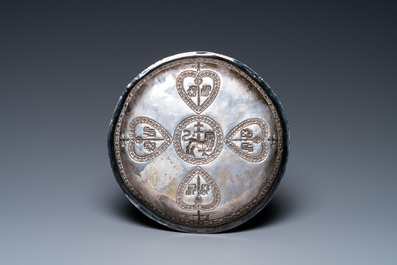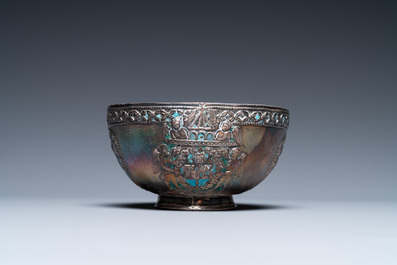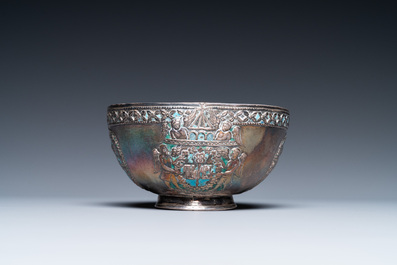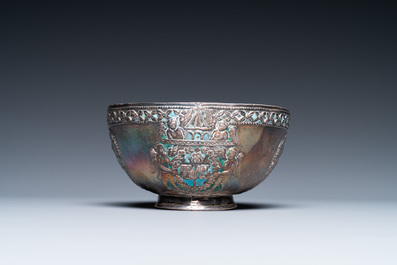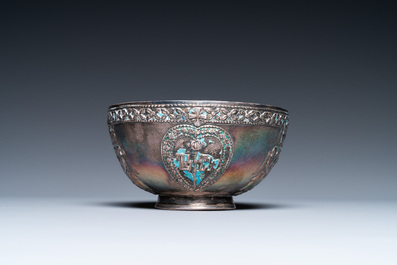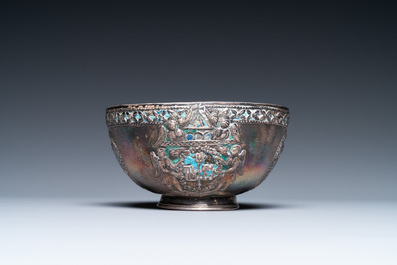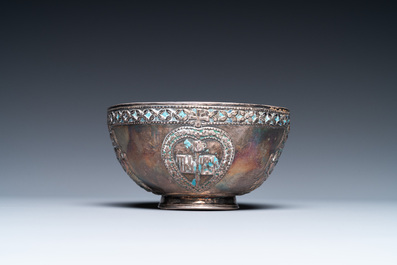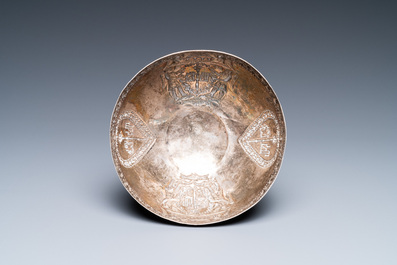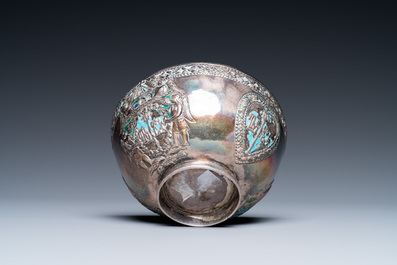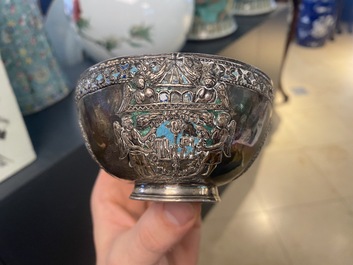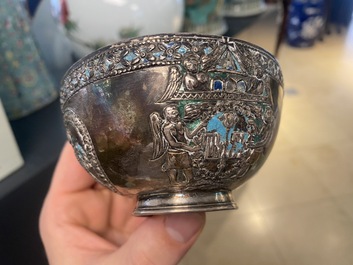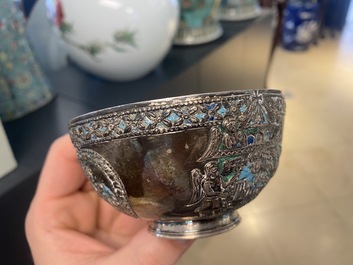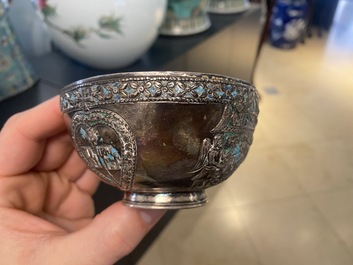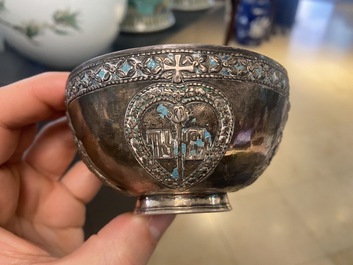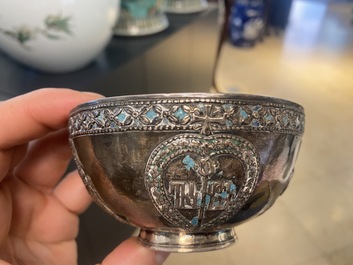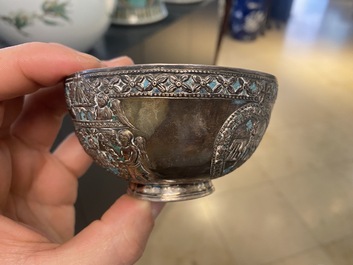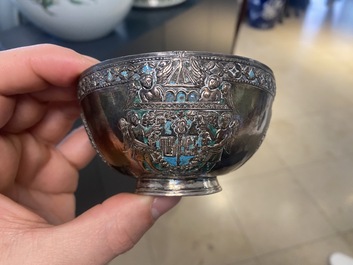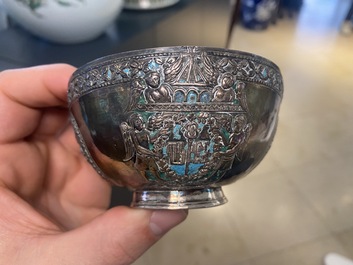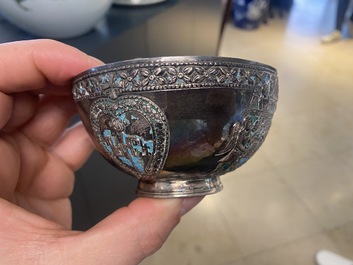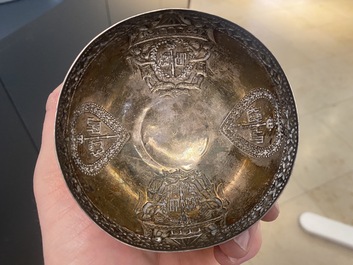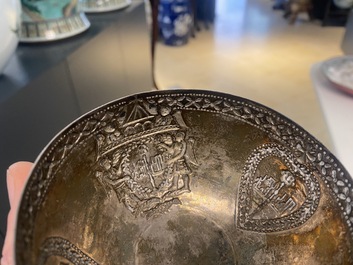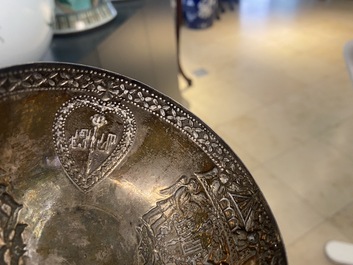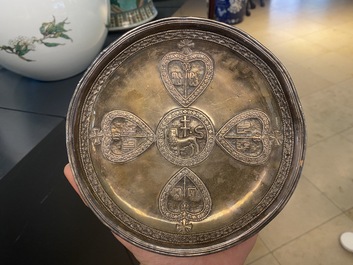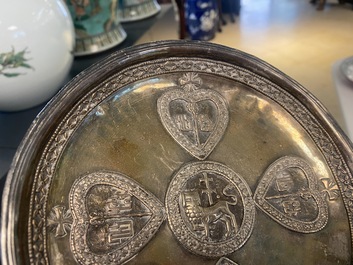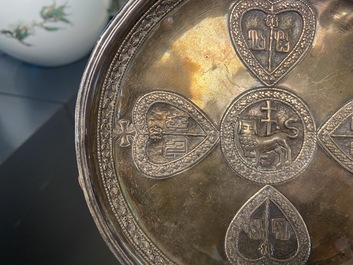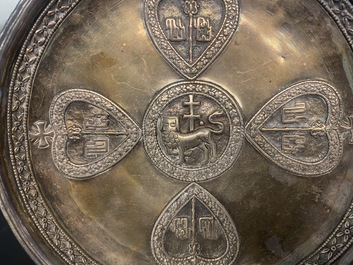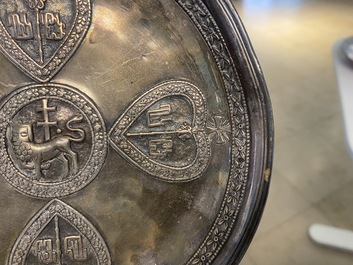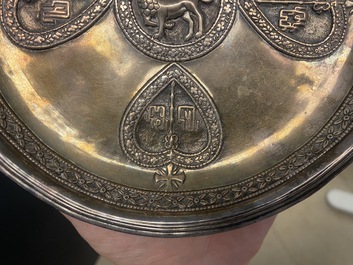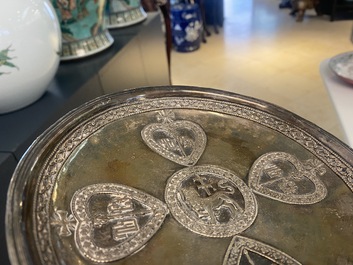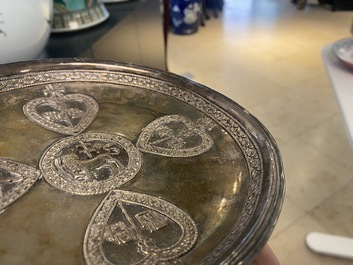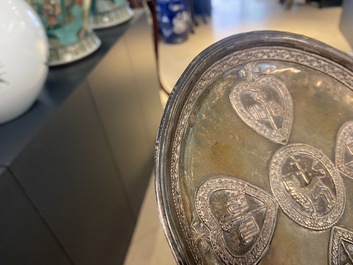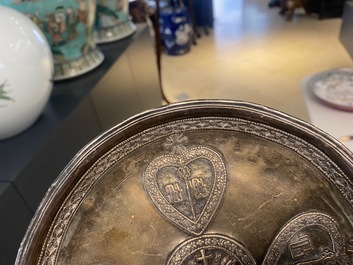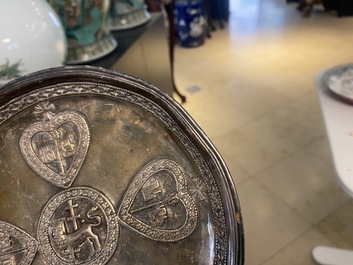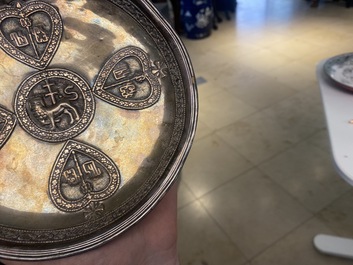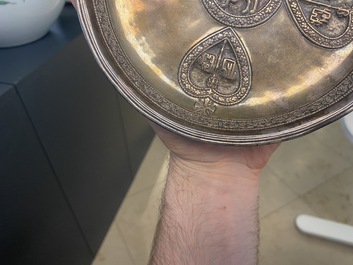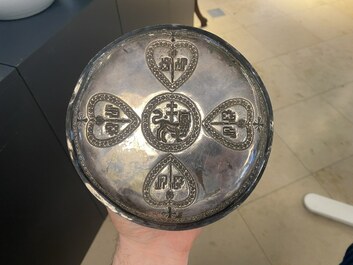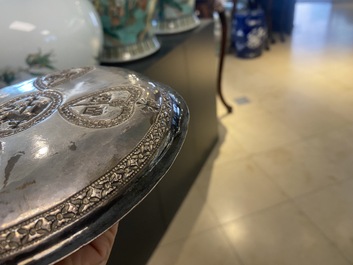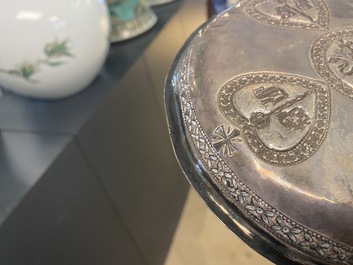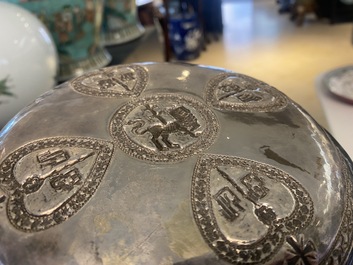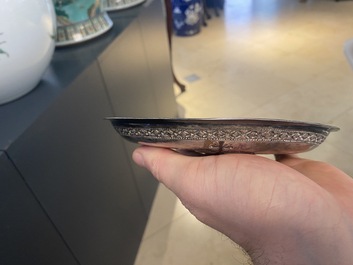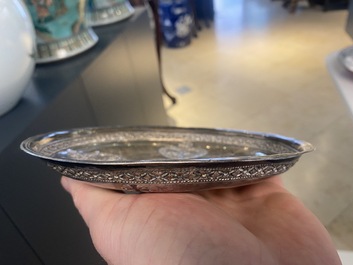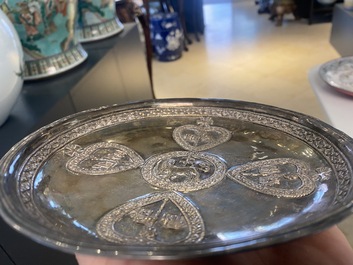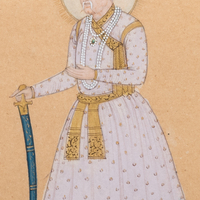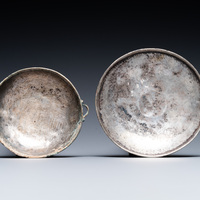We have to double-check your registration and make sure this is not an automated entry in our system. Please complete the test below...
An Armenian enamelled silver cup and saucer, 18th C.
Dia.: 17 cm (the saucer)
Dia.: 9,5 cm - H.: 5 cm (the cup)
Condition: (UV-checked)
- The cup with losses to the enamel as visible, small dents and superficial wear.
- The saucer with small dents and superficial wear.
- The set overall of very attractive appearance, the silver of good quality.
Ref.:
- Christie's, London, April 21, 2016, lot 198, for a similar set. (link)
- 'Armenian Patrons for Chinese Commodities. Trade Networks and Cultural Exchange across Asia', George Manginis, Benaki Museum, where the author writes: 'There is a cup in the Musée Arménien de France which can be safely associated with a known patriarch (catholicos) of the Armenian Apostolic Church. It is decorated with a coat of arms crowned by an Armenian-style belfry. It is surrounded by two putti seemingly half-submerged in a baptismal font. Two anthropomorphic angels act as supporters and step on an eagle with outstretched wings. The monogram within the coat of arms consists of the letters GhKS / KThK separated by a bishop’s crozier with a cross on top; they are the abbreviated form of (Gh[ou]k[a]s K[a]th[oghi]k[os]). The eagle is the emblem of the Armenian Catholicate.
The set was commissioned for the Catholicos Ghoukas I Karnetsi (1722–1799). Born in Karin, present-day Erzurum in Anatolia, Ghoukas became bishop of this town before rising to the highest rank in the Armenian Apostolic Church in 1780 and moving to Etchmiadzin (Vagharshapat), also within the Ottoman Empire. He was a patron of the arts and during his tenure the Cathedral of Holy Etchmiadzin was decorated with wall paintings by Hovnatan Hovnatanian (approximately 1730–1801), member of a prominent family of Armenian painters. Ghoukas was the head of the Armenian community, or millet, in the Ottoman Empire. He was responsible for fellow Armenians in both spiritual and secular domains. The status of his countrymen within the Empire varied at that time, but the more affluent and sophisticated among them were able to commission exotic trinkets and indulge in extravagant fashions, for example Chinese export art.
Furthermore, for most of the eighteenth century, the Ottoman trade in imported luxury goods was controlled by wealthy Armenians in Constantinople and other cities, and Chinese porcelain was particularly important among these goods. It is also possible that the porcelain bowl, as well as the silver ones, were ordered for Ghoukas by the Madras Armenian community, which could also have commissioned the Beglarian enamels through their East India Company connections.'
